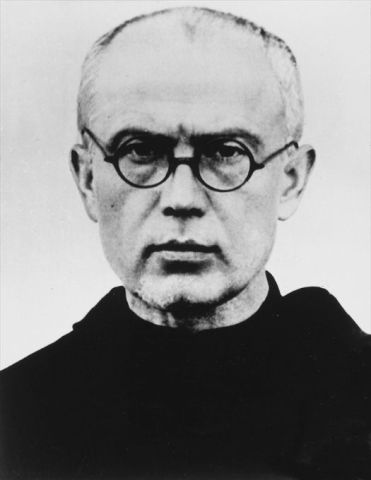Religious Resistance in Auschwitz: The Sacrifice of Saint Kolbe
Maximilian Kolbe, born in Poland in 1894, was a Franciscan friar and Catholic priest. He spent most of his life studying theology and dedicating himself to the church, traveling across Europe and Asia during his lifetime.
He was a well-respected member of the church, but is perhaps best known for the time he spent as a prisoner. When Word War II broke out, Kolbe was one of the few friars that remained with his monastery in Poland; eventually it was shut down, and Kolbe and the others that stayed were arrested and sent to Pawiak Prison. There he spent a few months before he was deported to Auschwitz.

Stories say that Kolbe survived without food or water for two weeks in the underground prison cell. He was the last of the ten to die, eventually executed by lethal injection. Because of his sacrifice, Saint Kolbe was beatified and then canonized as a saint by Pope John Paul II in 1982.
Kolbe is mentioned in several testimonies in the Visual History Archive by survivors who heard his story, people who had met him before the war, and other prisoners who spent time in Pawiak prison.
Jan Dudzinski, a Jewish survivor, was one of those prisoners who met Kolbe during his time at Pawiak prison, although Dudzinski did not realize it at the time. Dudzinski recalls finding a group of newcomers to the prison praying together and advising them to stop, as they would be punished if the guards saw them. “One of these men turned around to me and looked at me like, I don’t know, it was unusual, and he thanked me very much for the information. They dispersed and I went my way.” He realized years later that this man he’d spoken to was Father Kolbe.
Kolbe said “I’ll take his place.”
Jacek Dabrowski, a Polish priest himself, met Kolbe at his monastery at the start of the war. Dabrowski remembers encouraging Kolbe to escape, to which Kolbe shook his head. “In some way, he agreed that he had to be arrested and to be killed.”
The memory of Kolbe’s sacrifice is kept alive by his feast day, August 14th, the date of his execution at Auschwitz. Also, his story of sacrifice and resistance is preserved in the Visual History Archive through the memory of survivors.